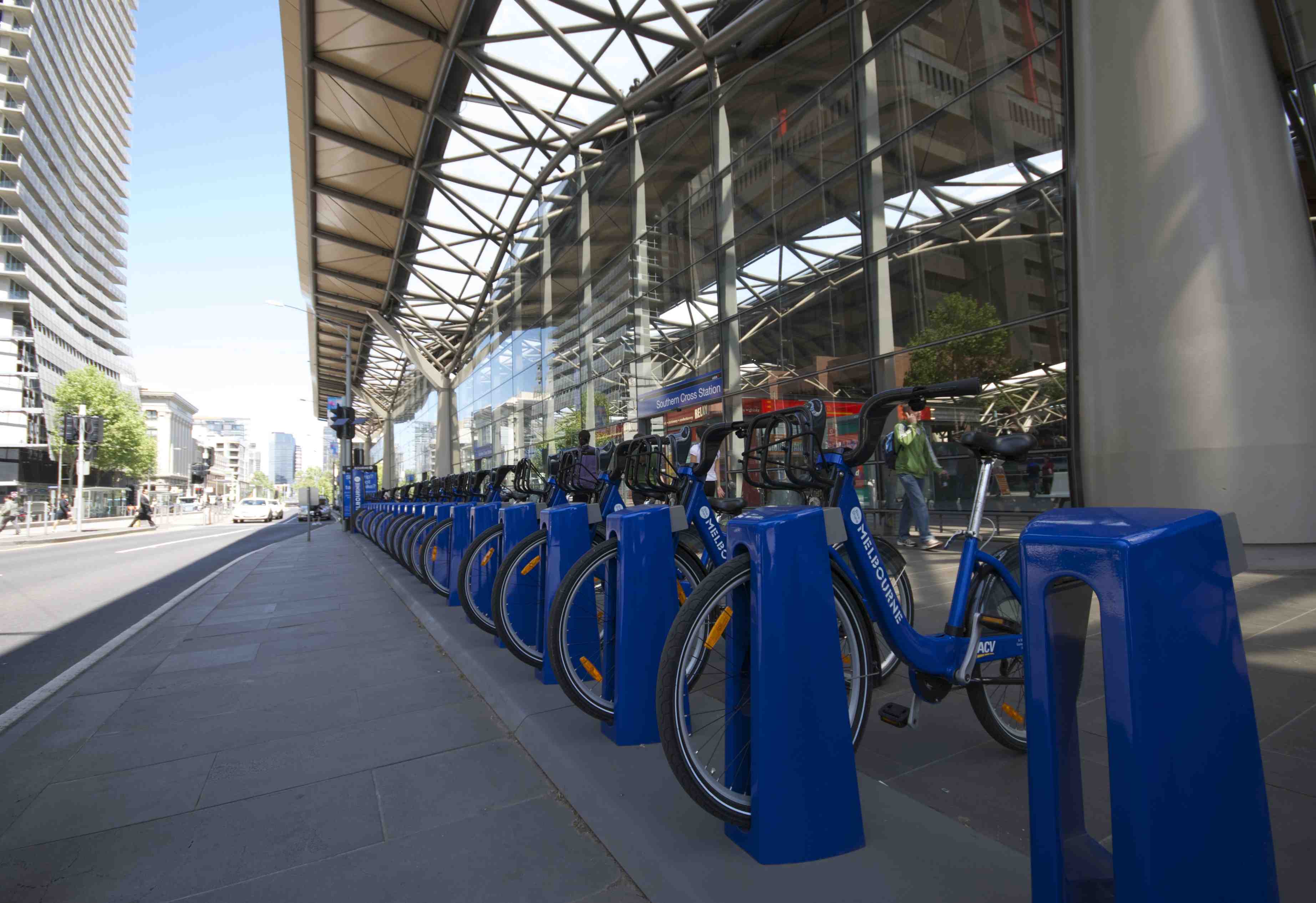Melbourne’s bike sharing program has not been nearly as successful as those in London, Paris, China or Mexico City.
Many blame the mandatory helmet law: data suggests bikeshare programs have failed in the cities where helmets are compulsory.
Internationally, usage rates generally vary between three and eight trips per day per bike.
In Brisbane and Melbourne usage has been within 0.3–0.4 and 0.4–0.8 trips per day per bike.
In the winter months in Washington DC, even with snow, they have a higher usage per day than in the summer months of Melbourne or Brisbane.
In recent years campaigns have taken off for the reversal of helmet laws in Australia due to the poor use of the systems.
These campaigns want to give the right of choice to adults whether they wear a helmet, but does the failure go further than just helmets?
In Victoria the government subsidises the cost of the helmets and they are available for $5 at ‘conveniently’ located outlets.
In Brisbane 400 free helmets are available on an honesty basis. These actions have seen slight increases in the usage.
Studies find a number of reasons to explain the low levels of bike share popularity in Australia.
Focus groups in Brisbane said the accessibility problems (the sign up process, helmets and docking station location) and safety issues reduced use.
The 10pm closing time frustrated current members. In most cities they are open 24/7.
But reversing the helmet law would not magically change the system into the success story of Paris’s Vélib.
Many other variables play a role in the success such as urban form, special divide and culture.
For instance, cycling accounts for a much greater percentage of transport in The Netherlands to the UK despite the fact neither have mandatory helmet laws.
Australian cities are not bunched into groups of dense neighbourhoods, and most of the action is in the city where everything is quite accessible by walking.
A trial of the bike share program may be worthy in neighborhoods of Melbourne such as Brunswick, Carlton, Fitzroy and Collingwood, where there is a lack of east-west transport to accomodate it.
Other worthy trials may also been seen in the outer suburbs where homes are not situated near rail stations, and there is a major lack of connectivity between the bus and rail service.
Integrating the bike system with Myki may improve its perception as a form a transport and also increase the ease of use.
Melbourne has a defined system of recreational cycling paths, but barely any segregated bicycle lanes that promote bike use as a form of travel rather than a hobby.
The City of Melbourne has began to implement some bike only lanes but it is far from a bike-centered system.
Australia does not have the pro-bicycle history and culture of many parts of Europe.
Australian’s do not view the bycicle as a form of transport and feel less confident cycling on roads.
A study has suggested improvements to Australian bike share systems to bring them closer to international norms.
- Substantial improvements to the bicycle lane/path network
- Lower speed limits in places to encourage the confidence and safety of bikers
- Integration with public transport smartcard ticketing
- Significant increase in docking stations and bicycles (particularly Melbourne)
- Improved helmet availability.
Before assuming the mandatory helmet law is to blame for the poor usage of Australian bike share systems, further analysis is required to tailor a system that will the population find easy, safe and accessible.
Matt O’Leary

